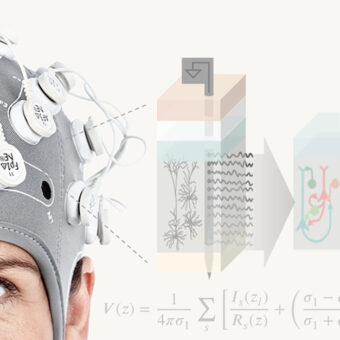Some would say that my mom is a bit eccentric … When we were little, she would have us play a fun game … well, I remember this happening at least once probably around 1975. The game was … telepathy. My siblings and I would sit around for a while trying to transmit each other thoughts. Could we transmit words to each other? Concentrate hard and …
Needless to say, we didn’t really make much progress during those experiments, but the game was productive because it was thought provoking: why couldn’t we do this? It seemed a natural enough thing to try, really. And speech was such a slow medium….
Years later (2006) I was reminiscing about the good old Starlab Brussels years (around 2000) with an old friend of mine – Walter Van de Velde – one night in November (IST 2006, Helsinki). We were trying to think of great visions for the future, “deep-time” ideas in the original Starlab tradition. The dinner was fun and, well, a bit “spirited”. One of the challenges Walter posed was … telepathy. What about telepathy? Could we enable direct brain-to-brain communication? Now, that sounded fun! Of course, we didn’t have an idea on how to do that even if the BCI part (the brain-to-computer part) was doable using EEG. But just around that time I had started noticing some interesting work in non-invasive brain stimulation, namely using TMS and tDCS. In my mind those days, thoughts and consciousness in the human brain were nothing but changing, dynamic electromagnetic field patterns. Read them using EEG, write to them using brain stimulation.
Discussing these ideas back in Barcelona with my colleague Carles Grau, it became clear that a TMS solution would work for the CBI (computer-to-brain) part, but we both thought it would be a solution falling a bit into the “cannon-for-flies” tradition. Ugly. It would work, sure, but a tad brute force. I was more interested in the recent Lisa Marshall work on tDCS on sleep and memory consolidation, with its subtle effects on brain activity. Could we transmit moods, emotions…sensations into a B2B receiver using tDCS or related technologies (such as tACS, for example)?
These musings on the power of tDCS/tACS for computer-brain interaction led to the development of the HIVE project, and in turn to the creation of the Starstim product and of a new company, Neuroelectrics. But in terms of solving the CBI part of the B2B equation … well, that is still work in progress! At some point it became clear that TMS would be the fastest solution for a B2B demonstration.
Now, we explored a solution involving TMS “tactenes” (tactile sensations elicited from TMS pulses on the somatosensory cortex). This worked! You can feel tactile sensation with TMS. However, your hand muscles are also affected by this (as seen by EMG), so where does the tactile feeling come from? Truly from within your brain, or back from sensors in your hand?
These considerations led us back to the TMS phosphene solution (with stimulation locations well away from the motor cortex). But even that approach was surprisingly fraught with challenges. What if the receiver subject can tell where or how you place the TMS coil, and from that “get” the message? Well, I could explain what we did to address this satisfactorily, but you can read it in the paper (we did our best to make it clear there!). Suffice to say that after much head scratching we came up with solutions (techniques) to ensure that we were indeed achieving pure B2B – hyperinteraction!
Telepathy? Well, no – but almost. Happy birthday, Ma!




